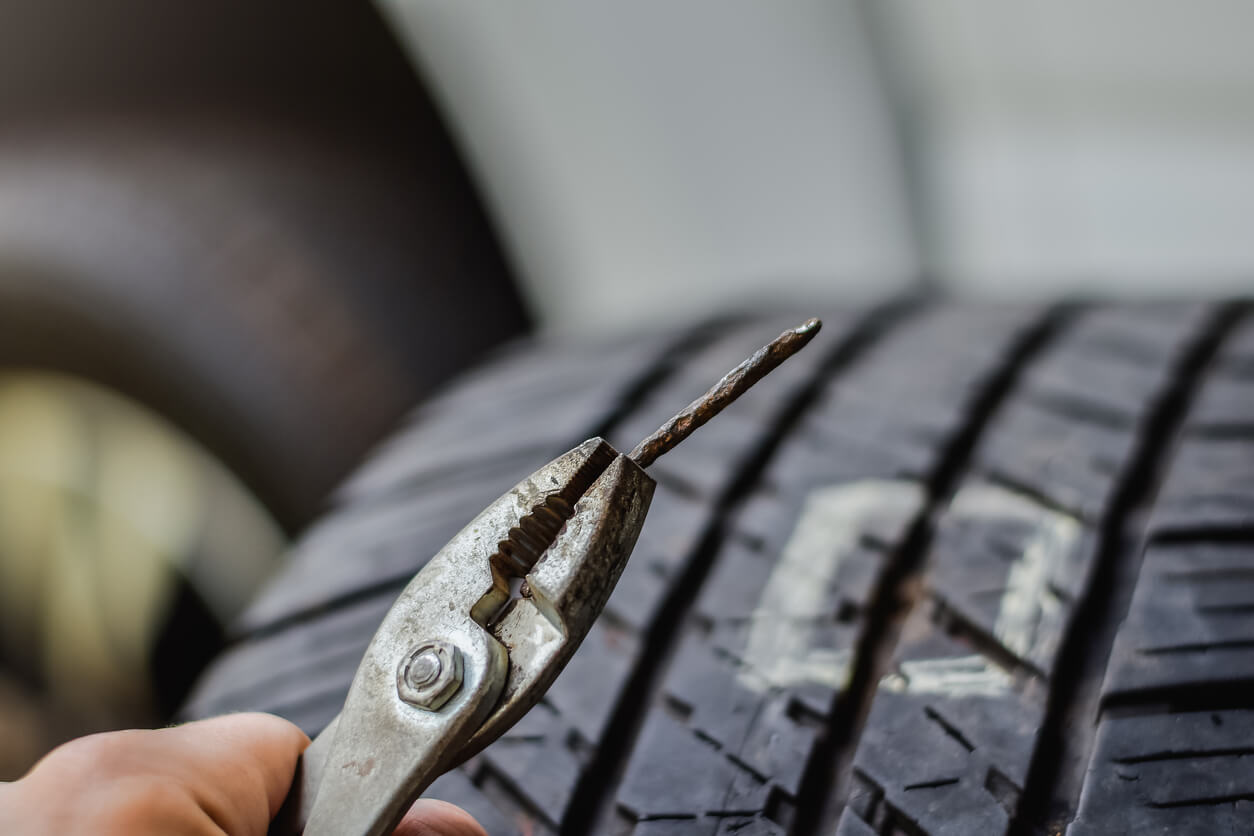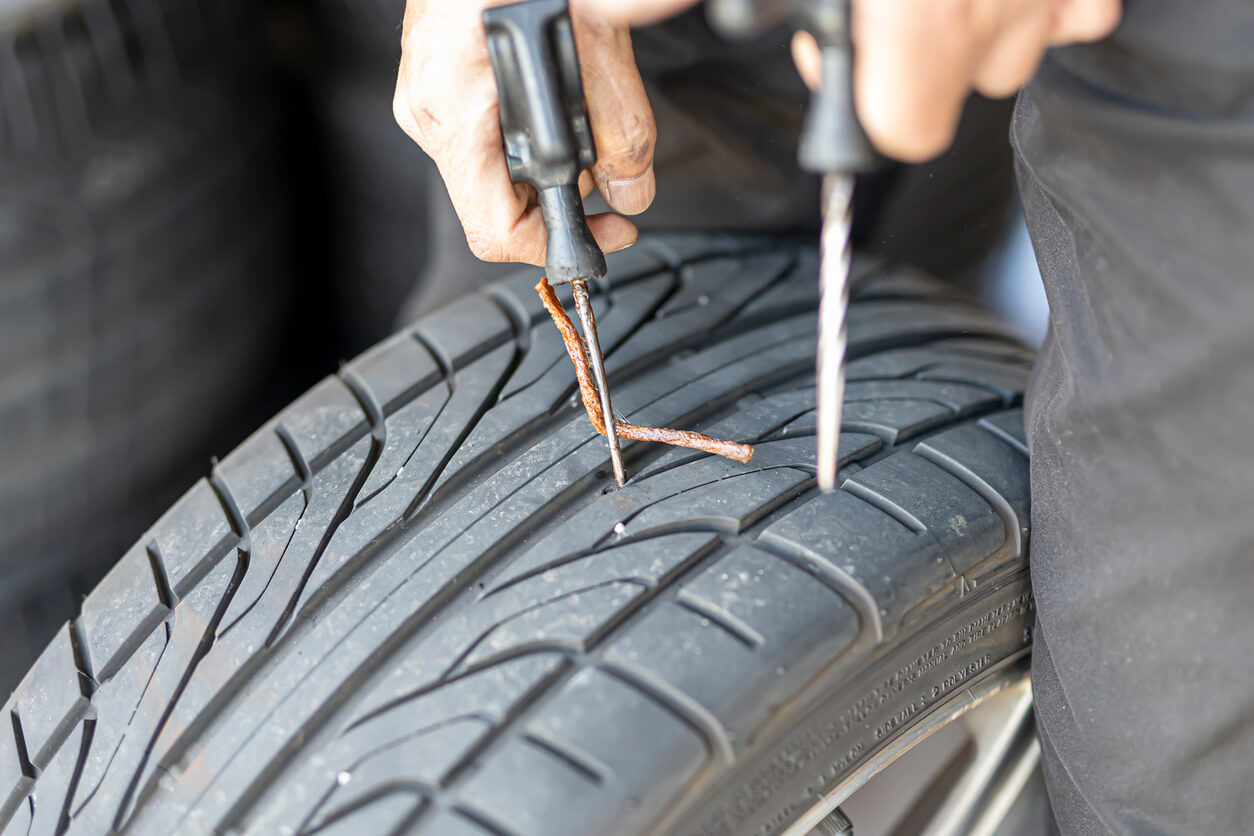Tyre Puncture Repair: A Guide for the Handy Driver
Picture this: you're on a scenic drive, enjoying the open road, when suddenly, the dreaded thud of a flat tyre interrupts your journey. It's a common scenario that many drivers face, but don't worry, it's not the end of your adventure. With a bit of knowledge and some handy tools, fixing a tyre puncture can be a straightforward task.
If you’re able to get to your nearest Tyrepower store, we’ll repair your tyre using a patch that is applied from the inside of the tyre. This type of repair is considered a permanent solution and will outlast the rest of your tyre.
In this article, we'll guide you through the essentials of having a crack at repairing a tyre puncture yourself, if you’re comfortable with hand tools and have a kit handy.
Whether you're in a remote location without roadside assistance or simply prefer the satisfaction of a DIY fix, this guide will equip you with the know-how to get back on the road safely and efficiently.
This guide is helpful for minor, temporary, tyre repairs, it's always wise to consult a professional tyre store for assessing more significant damage.
What is a Tyre Puncture?
A tyre puncture is a type of tyre leak, where a hole or tear in the tyre's surface allows air to escape, causing the tyre to deflate. It can be caused by sharp objects like nails or glass, or even a hard impact with a pothole.
Tyre air leaks can be sudden or it can be a slow leak where you have time to notice the issue before you have a totally flat tyre.
Why Should Punctures Be Repaired As Soon As Possible?
Delaying a puncture repair can lead to further tyre damage, decreased fuel efficiency, and compromised vehicle handling and safety.
Driving on a significantly deflated tyre can cause irreparable damage, leaving you with a compromised tyre that could fail again at any time. If you have attempted a tyre puncture repair, you should bring your tyre into your nearest Tyrepower store for a proper leak test and tyre health check.

When Should the Driver Consider Swapping to a Spare Tyre?
While most punctures can be repaired successfully, there are times when it’s either impossible, impractical or dangerous to repair a tyre.
If the puncture is large, located on the tyre's sidewall, or if you're experiencing significant air loss, it's safer to switch to your spare tyre. Always remember, a spare tyre is designed for temporary use and should be replaced with a repaired or new tyre as soon as possible.
How to Use a Common Tyre Repair Plug Kit
Swapping over to your spare tyre is often the best course of action, but if your vehicle doesn’t have a spare, the spare is unsuitable, or you only have a tyre repair kit, here are the basic steps.
- Locate the Puncture: Remove the tyre and inspect it for the puncture site. Some soapy water can help you find the leak.
- Prepare the Hole: Use the reamer tool to clean and slightly enlarge the hole. This seems counter intuitive, but using the reamer cleans the hole, removes contaminants and helps ensure an airtight plug.
- Insert the Plug: Thread the repair plug through the insertion tool, apply rubber cement if included, and insert the plug into the hole until about 10mm or so sticks out of the tyre.
- Seal the Puncture: Then pull the insertion tool out, leaving the plug in the tyre.
- Trim and Inflate: Trim any excess plug material and inflate the tyre to the recommended pressure. Remember, it’s no good just fixing the hole if you’re only going to drive on the flat tyre anyway. You must inflate the tyre back up to both test the effectiveness of your plug as well as ensure the tyre is safe to drive on again.
Hopefully by now, you have a repaired tyre! But if you still have a leak, your only options are to try a second plug or look into other options.

Notes on Tyre Repair Suitability
Driving on a flat tyre for any period of time will damage the insides of the tyre sidewall, causing chafing and bruising that leads to sudden and dramatic tyre blowouts. Tyres with this sort of damage should not be repaired.
Keep in mind that long-term, durable repairs are only viable on punctures smaller than ¼ inch in diameter and are located in the centre of the tyre's tread area.
Sidewall and shoulder damage should never be repaired and should be considered only in the event of an emergency. Tyres with this kind of damage should be installed on the rear of a vehicle and should be professionally replaced as soon as possible.
Before you go
In conclusion, while fixing a tyre puncture can often be a straightforward DIY task, your safety should always come first. Never attempt to change a tyre in a location where you could be hit by oncoming traffic, and always be aware of your surroundings, especially moving vehicles.
If you're ever in doubt or feel unsafe, don't hesitate to call for roadside assistance or reach out to your local Tyrepower store for expert advice over the phone. After any DIY puncture repair, it's crucial to have your tyre inspected by a professional at a tyre store to ensure it's safe for prolonged use.
Regular tyre maintenance and checks can also prevent unexpected punctures and ensure your safety on the road.
Your journey doesn't have to end with a flat tyre. With the right approach and a bit of caution, you'll be back on the road in no time. And remember, Tyrepower is just a phone call away for all your tyre needs and expert advice.
Need help or advice? Call your local Tyrepower store to learn about what options you have for a tyre repair, a tyre safety check or general tyre advice today!

